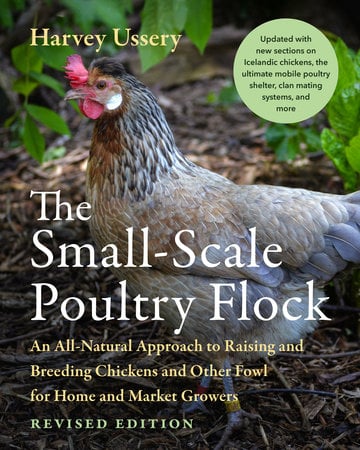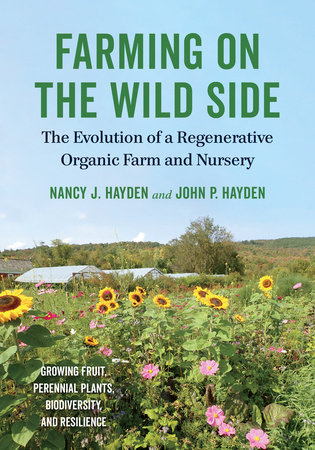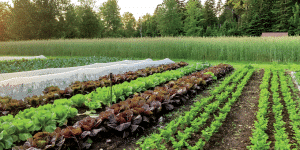An Eggcellent Idea: The Egg Club at Lynbreck Croft
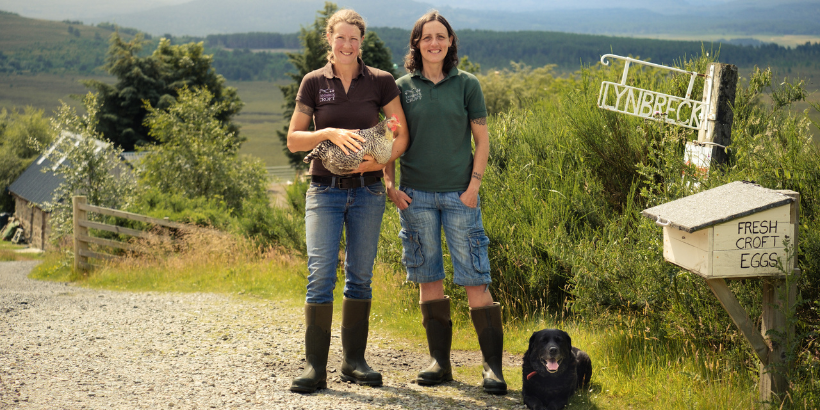
Lynn Cassells and Sandra Baer left their friends, family, and jobs in England to travel north to Scotland to find a bit of land that they could call their own. They had in mind keeping a few chickens, a kitchen garden, and renting out some camping space; instead, they fell in love with Lynbreck Croft—150 acres of opportunity and beauty, shrouded by the Cairngorms and deep in the Highlands of Scotland.
As Lynbreck Croft began to see success, Lynn and Sandra put their heads together to see how they could build a bridge between farmers and the food that people consume on an everyday basis. Thus, the Egg Club was born.
In the excerpt below, Lynn recounts the beginnings of the Egg Club and shares how the idea came to fruition.
The following is an excerpt from Our Wild Farming Life by Sandra Baer and Lynn Cassells. It has been adapted for the web.
All photos by Sandra Angers Blondin.
In the first few years at Lynbreck, our focus had been mainly on installing croft infrastructure – building a new barn, renovating the old byre, installing eight kilometres of new fencing, planting twenty-three thousand trees (a mix of new woodland, hedgerows and shelterbelts that would eventually become nearly thirty thousand), protecting an additional nine hectares of young woodland (that was naturally regenerating itself) and buying a whole suite of animals and kit that we would need to run our new farming business. Within thirty months Lynbreck had been transformed from a semi-derelict crofting unit into a fully kitted-out new agricultural business through an immense amount of hard work and by saving every penny earned, living within a tight budget, and accessing any rural grant funding that was suitable and available at that time. Lynbreck was now, finally, a place where producing food for sale more regularly could begin.
With twenty-five new hens arriving for the Eggmobile that summer to work as our pasture regenerators and soil builders, the pressure was on more than ever to find a sales outlet for all the eggs that would soon appear. With the best will in the world, we could not eat that many omelettes, cakes or meringues, and while our roadside honesty box was popular and great for surplus eggs, custom could be irregular and sales slowed down dramatically over winter. Until one day, I had a lightbulb moment.
Shelling Out A Plan: The Start of the Egg Club
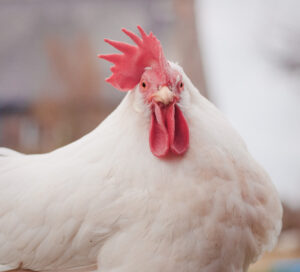
‘Do you think anyone will sign up? I mean we think it’s a great idea, but do you think anyone else will?’
‘Look calm down, OK. Let’s just give this a go and see what happens. It might just take a bit of time’.
Sandra has always been the steady ship between us as I bob around like a dinghy trying to navigate what can sometimes be a storm in a teacup. My impatience wants immediate results and when they don’t happen, I always think the worst and I don’t know why as panic can then start to set in. Sandra, on the other hand, is much more pragmatic and calm, keeping a grounded head as I huff and puff, usually completely unnecessarily. And this situation was no different from many that had gone before or would come after.
A number of our friends were immediate sign-ups as well as quite a few folks we didn’t know, which was really exciting and evidence that word of our work was beginning to ripple through the local community. After two weeks, our subscriptions were all full and we were thrilled. We’d decided to charge £2 for a half-dozen box of eggs, a rate higher than other small-scale producers that sold roadside. It’s a funny feeling when you are selling your produce for the first time and asking for money from it. You feel as though you just want to give it away and, for us, it was a strange and slightly awkward transition. And, with the price we set, it definitely made our eggs more expensive than many. But, because we were now trying to run things as a business, it was important to know our figures for what it would actually cost to produce the eggs – the organic feed, equipment such as feeders and drinkers, maintenance of their various buildings, delivery costs to town and even depreciation, a new but frightening hidden cost that we saw appear on our annual accounts. And what about our time? Normally when people go to work, they get paid for it. Should we and could we factor that into the figures? When we sat down to work through all of this, it was pretty frightening.
Getting Down to Business: Assessing Costs
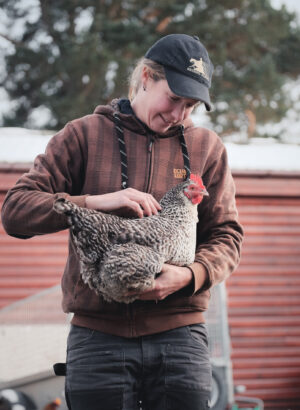
In shops, half a dozen eggs can start at less than £1, right up to £2.20 in our local supermarket, and more in others for the top organic range. While economies of scale can be one factor, we started to understand even more the realities and impact of the price of food. Food prices have been driven so low by retailers that people are now used to paying such prices rather than the true cost, resulting in the vast majority of farms today being propped up by annual government subsidies (many farms would go bankrupt overnight if the subsidies disappeared). A lot of producers who are selling direct often won’t charge what it actually costs to produce because people will just not buy it. Unless and until customers understand why those eggs come at that price, they will question what extra they are getting for their money. Yet by charging a higher price, those on lower incomes are usually excluded from buying the best produce. With food poverty on the rise, many people can’t even afford the basics to stay healthy, never mind make conscious food choices based on environmental impact and animal welfare. The growing disparity between more expensive healthy food for the privileged few and cheaper unhealthy food for those on lower incomes is one of the biggest injustices in society today.
An Eggstra Special Connection: Making Deliveries
The night before our first deliveries, I had a list of all the new members and where they lived so I could plan the most straightforward delivery route around the town, estimating that it would take about an hour to get round every house. Sandra had been preparing the boxes we would need throughout the week. With hens that lay blue, white, green and all shades of brown colours, she would carefully fill every box, checking each egg from that day’s collection for cracks or blemishes and mixing the colours up so that customers would get a rainbow selection. It was the very antithesis of mass processing where Radio 4 would be playing in the background as she took her time to make them look as presentable as possible.
On the first delivery day Sandra stayed on the croft to work on chores as I spent a little extra time on my rounds getting to know our new customers. Upon my return, it became apparent that the estimation of an hour per full delivery round had been grossly underestimated. It wasn’t that we had miscalculated the route, it was that the length of ‘talking time’ had not been taken into account, those few minutes when the customer sees you arriving and comes out for a friendly chat to converse on weekly happenings. As a result, deliveries were actually taking between two to three hours as I would have different catch-ups with different customers, not to mention the conversations with people I would bump into on the street or in local shops while picking up some shopping in between. Although this wasn’t quite the ‘quick and efficient’ route we had planned, those two to three hours were some of the best invested and most enjoyable times of the week, getting to know our new members as they got to know us, building that bridge between their food and their farmer.
There was one customer in particular who lived in a first-floor flat, a lady we had never met before. I found the building and pressed the buzzer. ‘Hello,’ came the greeting through the crackly intercom. ‘Egg Club,’ came my reply. It was the first thing that came to mind to say, which came out in a sort of sing-song lilt. ‘Oh, hello!’ was the response, said in a way that you can hear someone smiling as they speak. I pushed the door open into the dark stairwell as she let me in and we met half way up, spending a few minutes chatting and getting to know one another. This is one of the lovely Egg Club traditions that has continued to this day.
Recommended Reads
Recent Articles
No heated greenhouse? No problem! Discover the secrets to thriving winter gardening without breaking the bank.
Read MoreYear-round growth without the hefty price tag of a greenhouse? Low tunnels are the cost-effective and flexible solution you’ve been looking for. Grow year-round with low tunnels!
Read MoreWintergreen is the stunning evergreen groundcover that’s a game-changer for your garden! It’s cherished for its aromatic leaves, vibrant fall color & bright berries.
Read MoreGrow winter carrots for a sweeter & more flavorful harvest! Ditch the bland, store-bought carrots this winter! Grow your own winter carrots for a sweeter and more flavorful twist 🥕🥕
Read More


